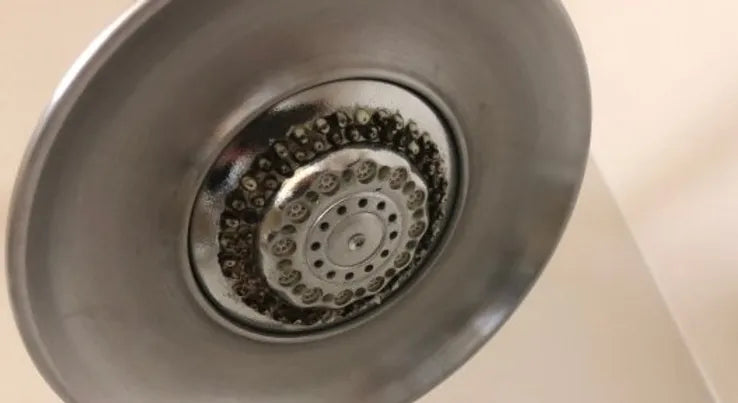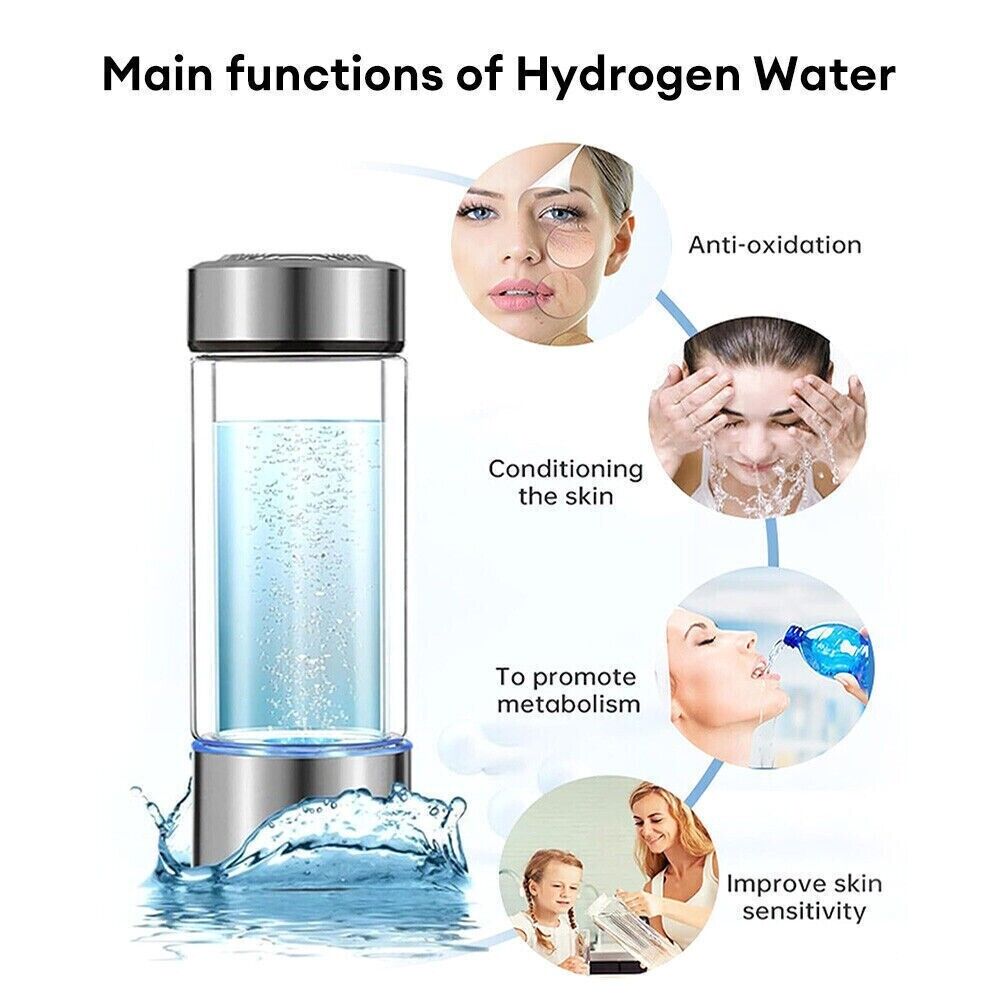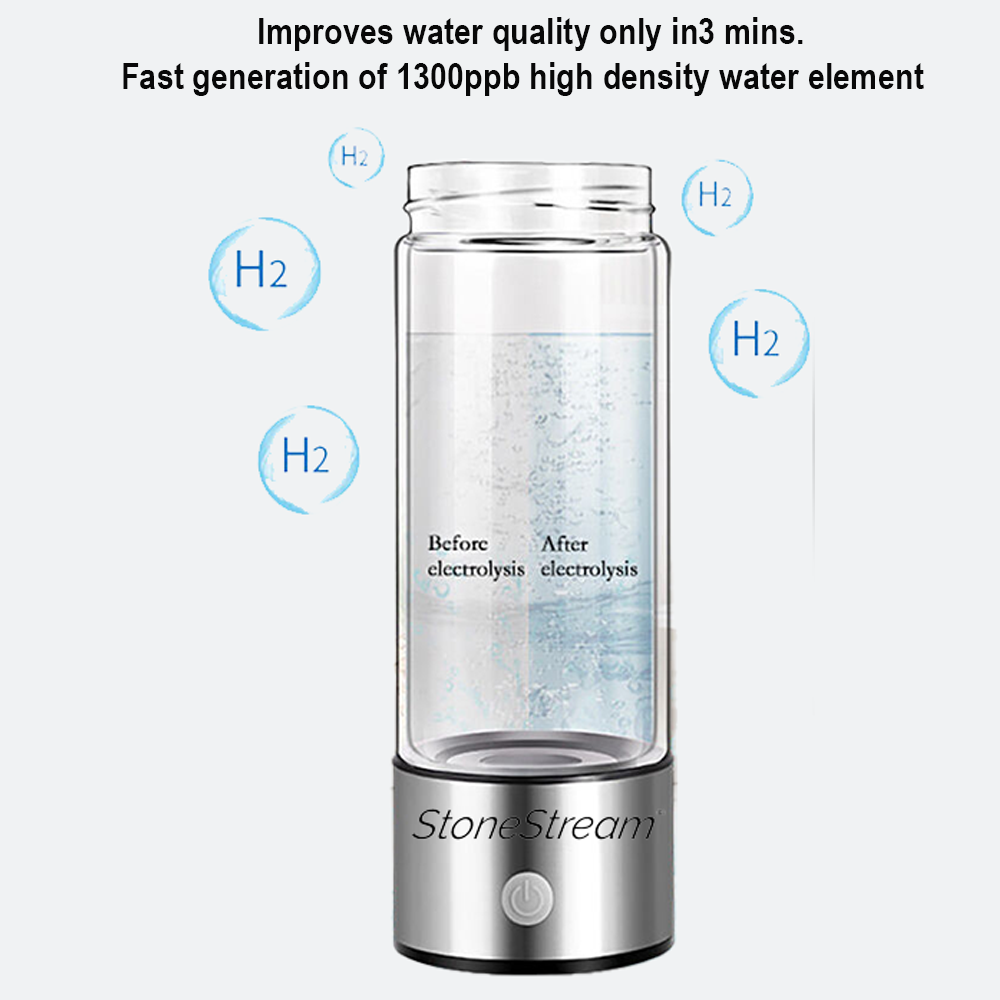Sie werden wahrscheinlich sofort bemerken, ob sich Schimmel auf dem Duschvorhang, den Wänden, den Fliesen, Glasduschtürenund Decke. Sie werden auch alle notwendigen Schritte unternehmen, um diese Bereiche zu reinigen. Aber wie viele von Ihnen haben sich schon einmal Gedanken darüber gemacht, ob sich in oder auf Ihrem Duschkopf Mikroben und Schimmel befinden? Reinigen Sie Ihren Duschkopf regelmäßig?
Leider ein perfekter Lebensraum für Duschbakterien
Sie wissen vielleicht, dass Pilzsporen und verschiedene Mikroben in warmen, feuchten und feuchten Bedingungen gedeihen. Und wo könnten sie besser wachsen als in Ihrem Duschkopf, wo sie bei jeder Dusche regelmäßig Nährstoffe erhalten?
Welche Arten von Duschkopfbakterien gibt es?
Es gibt viele verschiedene Arten von Bakterien um Sie, aber nicht alle von ihnen sind gefährlich. Also keine Panik, wenn wir sagen, dass es überall in unseren Badezimmern Bakterien gibt! Allerdings Doktorand von der School of Biological Sciences der Universität Bristol haben Spuren von Salmonellen und E.Coli in Badezimmern von Familien gefunden. Beide sind potenziell gesundheitsschädlich und können Magen-Darm-Entzündungen, Erbrechen und Durchfall verursachen. Huch!
Eine andere Bakterienart, Legionellen, verursacht Legionärskrankheit, lebt in Ihrem häuslichen Wassersystem und gedeiht in warmem Wasser, findet reichlich Nährstoffe zum Überleben wie Biofilmschleim, Rost, Algen und Kalk bei Temperaturen zwischen 20°C und 45°C.
Das Ungewöhnliche dabei ist, dass Sie sich die Krankheit (eine Lungenentzündungs-ähnliche Erkrankung) durch Legionellen einfangen, indem Sie infizierte Wassertröpfchen einatmen. Diese Krankheit kann verschiedene Probleme verursachen, insbesondere wenn Sie gesundheitliche Probleme haben. In schweren Fällen kann sie sogar tödlich sein. Seien Sie also vorsichtig, wenn Sie in einem vernachlässigten und schmutzigen Badezimmer duschen, in dem warmes Wasser gespeichert ist. Glücklicherweise ist es einfach, Legionellen und andere Bakterienarten sowie den schwarzen Schimmel auf Duschköpfen loszuwerden, aber darüber sprechen wir gleich.
Wie kann man die Vermehrung von Bakterien und Schimmel verhindern?
Erstens sind wir den ganzen Tag lang allen möglichen Bakterien, Pilzen und Schimmel ausgesetzt. Und die meisten davon schaden uns nicht. Tatsächlich sind einige Arten von Mikroorganismen für uns von Vorteil und können unser Immunsystem stärken.
Aber heute sprechen wir über die andere Art von Mikroorganismen – die fiesen.! Wir zeigen Ihnen, wie Sie Ihre effektiv reinigen können Dusche Kopf und beseitigen Sie lästige, krankheitserregende Bakterien und Schimmel. Befolgen Sie unsere Tipps, dann müssen Sie Ihren alten Duschkopf nicht wegwerfen, es sei denn, Sie möchten ihn aufrüsten und erneuern.
Es gibt einfache Möglichkeiten, das Wachstum von Bakterien und Schimmel auf Duschköpfen zu verhindern. Lassen Sie uns einige davon näher betrachten.
Reinigen Sie den Duschkopf regelmäßig
Ihr Duschkopf muss nicht schmutzig sein, damit Sie ihn reinigen können. Es ist gut, den Duschkopf (und andere Badezimmerarmaturen) regelmäßig zu reinigen, um die Keime fernzuhalten. Da jedoch die „inneren“ Oberflächen solcher Spielpläne sind nicht sichtbar, wir neigen oft dazu, sie zu vergessen. Richten Sie ein regelmäßige Reinigungsroutine um sämtliche Bakterien und Schimmel im Duschkopf auszurotten, bevor sie sich zu vermehren beginnen.
Nun, einige wichtig Punkte, die Sie beachten sollten.Verwenden Sie KEIN Bleichmittel zum Reinigen des Duschkopfs. Es gibt sichere, ungiftige und viel effektivere Möglichkeiten, Ihren Duschkopf von den kleinen mikroskopischen Monstern zu befreien.
Verwenden Sie auch KEINE aggressiven Chemikalien. Diese könnten Ihren Duschkopf beschädigen und die meisten Duschhersteller weisen ausdrücklich darauf hin, dass diese nicht verwendet werden dürfen.
VERGESSEN Sie auch grobe Bürsten, um Ihren Duschkopf sauber zu schrubben. Viele pulverbeschichtet Oberflächen werden zerkratzt. Was kann man also tun? Wir erklären es.
So reinigen Sie einen Duschkopf am besten
Du wirst Beachten Sie, dass Wenn die Löcher verstopft sind, werden die Wasserstrahlen abgelenkt. Reiben Sie die Löcher also mit Ihrem Daumen, um die Schmutzpartikel zu lösen. Wenn das nicht funktioniert, können Sie die Partikel in und um die Sprühlöcher mit einer alten Zahnbürste lösen.
Weißer Essig eignet sich hervorragend zum Reinigen von Duschköpfen. Die Essigsäure im Essig löst viele mineralische Ablagerungen, darunter Rost und Kalk. Wenn Sie einen fest installierten Duschkopf haben, füllen Sie eine Plastiktüte mit Essig und binden Sie die Tüte über den Duschkopf. Lassen Sie den Essig einige Stunden einweichen, am besten über Nacht. Lassen Sie dann sehr heißes Wasser durch die Düse laufen, um die Ablagerungen zu lösen.
Wenn Ihre Dusche über eine abnehmbare Wandhalterung verfügt Duschkopf mit einem flexiblen Schlauch, und reinigen Sie ihn dann auf eine etwas andere Art und Weise. Verwenden Sie auch hier weißen Essig. Aber diesmal verwenden Sie eine Schüssel. Entfernen Sie den Duschkopf vom Schlauch und zerlegen Sie ihn. Weichen Sie die Teile in der Schüssel ein und stellen Sie sicher, dass alles untergetaucht ist. Lassen Sie es einige Stunden einwirken, am besten über Nacht. Spülen Sie die Teile am Morgen ab, achten Sie darauf, alle Feststoffe wegzuspülen, und bauen Sie den Duschkopf wieder zusammen.

Reinigen Sie Ihren Duschkopf mit einer alten Zahnbürste, um sämtliche Partikel aus den Sprühlöchern zu entfernen.
Wie oft sollte ich den Duschkopf reinigen?
Wir empfehlen Ihnen, Ihren Duschkopf alle drei Monate gründlich zu reinigen. Es ist jedoch eine gute Idee, dies auch In Ihre wöchentliche Reinigungsroutine. Sie müssen es nur mit einem in Essig getränkten Papiertuch abwischen. Dadurch wird eine ernsthafte Ansammlung von Kalk, Schmutz und den Bakterien und Schimmel verhindert, die auf Kalk gedeihen.
Denken Sie daran, dass Bakterien und Schimmel auch in anderen Teilen Ihres häuslichen Wassersystems leben können. Es reicht also nicht aus, nur den Duschkopf sauber zu halten. Um das Bakterienvorkommen zu reduzieren und insbesondere wenn Ihr Wassersystem durch Legionellen gefährdet ist, sollten Sie Ihr System von einem professionellen Klempner spülen und überprüfen lassen.
Die Vorschriften sind von Land zu Land unterschiedlich, aber in Großbritannien müssen nur öffentliche und gewerbliche Gebäude sowie „gefährdete“ Orte wie Krankenhäuser und Pflegeheime jährlich überprüft werden. Wenn Sie gerade in ein neues Haus eingezogen sind, ist es möglicherweise eine gute Idee, eine Bewertung durchführen zu lassen. Bei der Überprüfung werden mögliche Brutstätten für Pilze und Bakterien aufgedeckt und der Klempner wird Möglichkeiten vorschlagen (z. B. den Austausch alter Wassertanks durch neue aus Kunststoff mit passenden Deckeln), um das Problem zu beheben.
Vorbeugen ist besser als Heilen
Viele Bereiche haben hartes Brauchwasser. Das bedeutet, dass Ihr Brauchwasser häufig gelöste Mineralien enthält, manchmal in hoher Konzentration. Diese gelösten Mineralien sind oft die Hauptursache für Probleme mit Ihrem Duschkopf. Die mit Abstand beste Möglichkeit, dies zu verhindern, ist die Installation eines Wasserfilters und -enthärters, entweder dort, wo das Wasser ins Haus kommt, oder an jedem Wasserauslass.Duschköpfe bilden hier keine Ausnahme und viele Hersteller haben sich auf diese mit eingebauten Wasserenthärtern und Filtern spezialisiert.
Steinstrom© verfügt über eine Reihe von Produkten speziell entwickelt, um gelöste Mineralien, Schwebstoffe und Bakterien zu entfernen. Unsere hochwertigen und effizienten EcoPower-Duschköpfe zur Wasserfilterung und -enthärtung verhindern das Wachstum von Bakterien und Schimmel, da sie Schmutz und Kalk herausfiltern, die solche Mikroorganismen überhaupt erst anziehen.
StoneStream EcoPower Duschkopf

Jetzt kaufen
Wir haben vorhin über die Legionellen-Bakterien gesprochen, die Ursachen so viele Probleme in unseren Klimaanlagen, Wasserspeichersystemen und überall dort, wo sie gedeihen und infizierte Wassertropfen produzieren können. Hier sind einige Tipps, um diese Bakterien zu vermeiden:
-
Halten Sie Ihr Wassersystem, Ihren Duschkopf und Ihren Schlauch frei von Kalk, Rost, Schmutz, Schleim und anderen Verunreinigungen.
-
Erzeugt Warmwasser mit einer Temperatur von mindestens 60°C.
-
Halten Sie Kaltwasserleitungen unter 20 °C.
-
Rohrleitungen entfernen tote Beine um Bereiche mit stehendem Wasser zu reduzieren.
Denken Sie daran, dass heißes Wasser mit sehr hoher Temperatur ein erhöhtes Verbrühungsrisiko birgt. Sie müssen an allen Warmwasserauslässen, insbesondere am Duschauslass, thermostatische Mischventile installieren. Dadurch wird verhindert, dass aus potenziellen Gefahren schlimme Unfälle werden.
Hohe Bakterien- und Schimmelkonzentrationen lassen sich leicht entfernen
Zusammenfassend lässt sich also sagen: Wenn Ihr häusliches Wassersystem veraltet ist, lassen Sie es überprüfen, um etwaige Probleme mit der Wasserleitung zu identifizieren und zu beheben. Dadurch werden auch potenzielle Brutstätten für Bakterien und Pilze in Ihrem Wassersystem im Allgemeinen beseitigt. Wenn Sie in Großbritannien leben, stellen Sie sicher, dass die Arbeiten den britischen Wasservorschriften entsprechen. Wenn Sie woanders leben, werden Sie wahrscheinlich feststellen, dass in Ihrem eigenen Land entsprechende Vorschriften gelten. Sie werden dabei professionelle Hilfe benötigen.
Um das Wachstum von Bakterien, Schimmel und Pilzen zu reduzieren, müssen Sie alle Wasserauslässe regelmäßig reinigen, insbesondere zeigenr Köpfe. Entfernen Sie alle Verunreinigungen wie Kalk, Rost und Schleim, indem Sie Wasserfilter und Wasserenthärter entweder dort installieren, wo das Wasser in Ihr Grundstück eintritt, oder an verschiedenen Auslässen. Wenn Sie sich nur auf Ihren Duschraum konzentrieren, entscheiden Sie sich für gefilterte Duschköpfe und Duschköpfe mit Wasserenthärter.
Bedenken Sie, dass viele Hersteller Duschköpfe anbieten, die diese Verunreinigungen entfernen, und dass es sich lohnt, einen guten zu installieren.
Schauen Sie sich gerne StoneStreams Sortiment an Duschköpfen und Duschzubehör an (wie Ersatzfilter, rutschfest Duschmatten und Duschschläuche), wenn Sie Badezimmerarmaturen wünschen, die langlebig, erschwinglich, umweltfreundlich und luxuriös sind! Um Duschköpfe und Duschzubehör online zu kaufen, gehen Sie über Zu unsere Website Heute.



